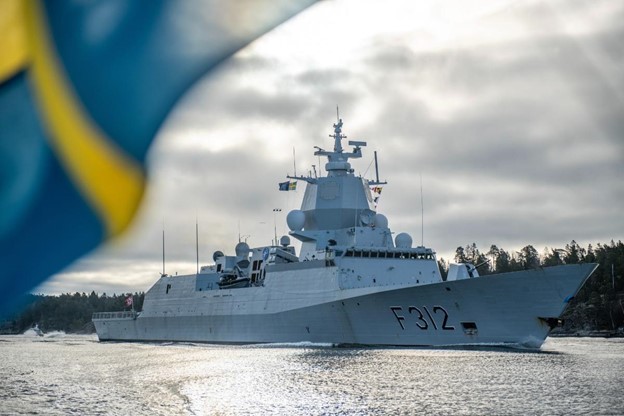NATO Secretary General Mark Rutte has announced the launch of a new military activity by NATO to strengthen the protection of critical infrastructure. “Baltic Sentry” will enhance NATO’s military presence in the Baltic Sea and improve Allies’ ability to respond to destabilizing acts.
Leaders from across the region have addressed the growing threat to critical undersea infrastructure. The Secretary General said recent sabotage had damaged energy and communication cables.
“Baltic Sentry” will involve a range of assets, including frigates and maritime patrol aircraft. The Secretary General also announced the deployment of new technologies, including a small fleet of naval drones, and highlighted that NATO will work with Allies to integrate national surveillance assets – all to improve the ability to protect critical undersea infrastructure and respond if required. NATO will work within the Critical Undersea Infrastructure Network, which includes industry, to explore further ways to protect infrastructure and improve resilience of underwater assets.
“Baltic Sentry will deliver focused deterrence throughout the Baltic Sea and counter destabilizing acts like those observed last month,” said U.S. Army General Christopher G. Cavoli, Supreme Allied Commander Europe. “It is indicative of the Alliance’s ability to rapidly respond to such destabilization, and shows the strength of our unity in the face of any challenge.”
Rutte also stressed the importance of robust enforcement. He highlighted how Finland has demonstrated that firm action within the law is possible, “Ship captains must understand that potential threats to our infrastructure will have consequences, including possible boarding, impounding, and arrest.”
According to a Rand study, “The strategic environment in the Baltic Sea region has undergone two key changes since 2022: (1) intensified North Atlantic Treaty Organization (NATO)–Russia tensions due to Russia’s full-scale invasion of Ukraine and (2) Finland’s and Sweden’s accessions to NATO. The region represents one of the largest interfaces between NATO and Russia, and essential civilian commerce and undersea infrastructure in the area are vulnerable to attack by Russia.”
Defense specialists caution that, while NATO’s expanded concentration on the Baltic is encouraging, danger persists. Julian Pawlak writing in the authoritative War on the Rocks website, notes that “With Finland and Sweden joining NATO, there has been renewed focus on the strategic situation in the Baltic Sea. By joining the alliance, the two Scandinavian countries almost complete its encirclement of the Baltic and help consolidate allied defense efforts in the region. Yet the Russian Federation persists in the Baltic, and its influence remains threatening. Thus many of the optimistic assessments about NATO’s newfound dominance in the region do not reflect the reality, as the alliance has yet to figure out how best to defend against and deter Russia in this particular part of Europe.”
The threat comes from China, as well. Elisabeth Braw, in an Atlantic Council.org study, note that a Chinese vessel, the Yi Peng 3, leaving the Russian Baltic Port of Ust-Luga may have been responsible for intentionally cutting two undersea cables. She reports that “On November 17, an undersea cable connecting Sweden and Lithuania was cut, and less than twenty-four hours later, the only communications cable connecting Finland with Germany was also severed. As OSINT investigators quickly gathered, the Yi Peng 3 was at the scene both times.”
On January 14, the President of Finland Alexander Stubb, Prime Minister of Estonia Kristen Michal, Prime Minister of Denmark Mette Frederiksen, Federal Chancellor of Germany Olaf Scholz, President of Latvia Edgars Rinkēvičs, President of Lithuania Gitanas Nausėda, Prime Minister of Poland Donald Tusk and Prime Minister of Sweden Ulf Kristersson issued a joint statement proclaiming that they are “…deeply concerned by actions, be they negligent or malicious, which cause damage to or threaten the functioning of critical undersea infrastructure. We strongly condemn acts of sabotage to critical undersea infrastructure. We are determined to deter, detect and counter any attempts at sabotage. Any attack against our infrastructure will be met with a robust and determined response. We stand ready to attribute hostile actions committed by malign actors, as appropriate.”
Photo: Swedish Naval vessel (NATO photo)
